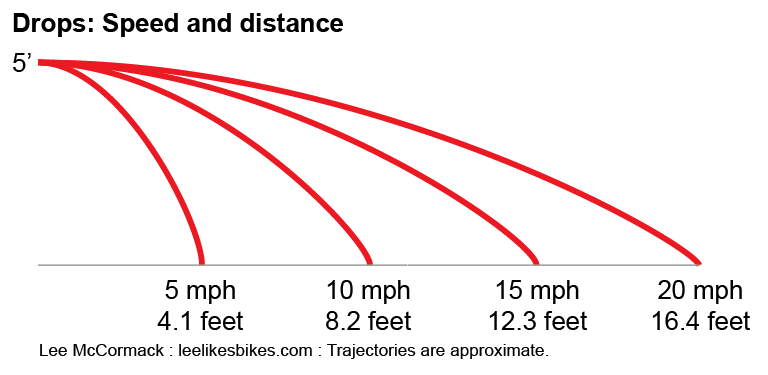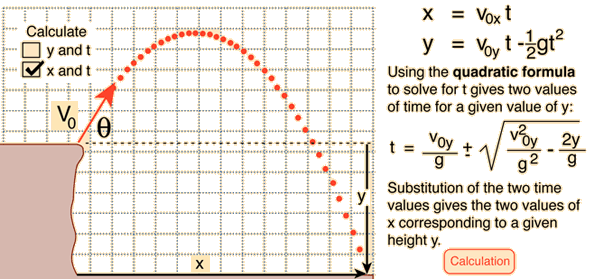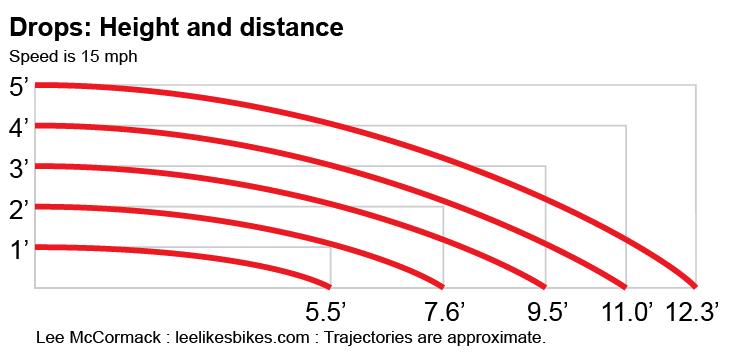Formula for sweet drops
Hey Lee,
I enjoy reading through all of your articles on your site, I have a question though that I have yet to find an answer to.
Is there a formula or proper way to figure how many feet away “y” the landing should be from the end of a man made drop that is “x” feet tall? I know that it has many factors such as speed, form, huckability, etc but I was just looking for a general rule of thumb on if it’s best to be 1:2 ratio, or what. (1’ height drop, landing 2’ from lip)
Thanks!
Jordon Mallett
Hi Jordon!
And thanks for the thought-provoking question.
There is an equation! Here it is, from the Hyperphysics site.
Clear as mud, right? You can go to their site and run your own calculations. If you do that and you pay attention, you will notice:
(This all ignores friction and air resistance, boosting and squashing. This math assumes a completely simple, clean scenario, like a medicine bar rolling off a ledge).
Given a set height, distance scales proportionately with speed. Twice as fast = twice as far.
Given a set speed, distance does not scale proportionately with height. The higher the drop, the relatively less far you fly. This is because your acceleration due to gravity is a square, and the longer you’re falling the faster you fall — and the less far you fly.
I want to give some easy rules and tips, but when you calculate distance for the variables of height and speed, things get very complicated. Never mind launch angles, downhill landings, wind and the rest. But I want to try, so here goes:
Know the riders’ speed. Experienced trail builder can feel this. If you don’t have the feel, have some people ride the previous section, and see what kind of speed they carry.
Build for a range of speeds. This means long, forgiving landings.
Use the Hyperphysics calculator. Ultimately this has to look and feel right, but the math will get you started in the right place.
1:2 isn’t a bad ratio at low speeds. At 10 mph off a 3-foot drop, the flight distance is 6.4 feet. How about giving a landing range of 1:1 to 1:3? If you’re going faster, go for a ratio closer to 1:4 or 1:5.
I hope this helps. What a fun can of worms.
Lee




Leave a Reply
Want to join the discussion?Feel free to contribute!